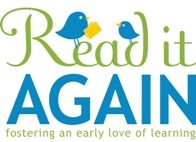FAQs
1. What is Story-Based Play?
Play-based learning is an educational approach that uses play as the primary vehicle for learning. It's a holistic method where children develop social, physical, and cognitive skills through enjoyable activities. Teachers guide learning through carefully planned activities that enable play.
2. What are the key elements of Story-Based Play?
The key elements include being self-directed (children choose the what, when, and how long of their play), enjoyable (children need to enjoy the activities), unstructured and imaginative, and process-oriented (focusing on the process of learning rather than a specific outcome).
3. How does Story-Based Play benefit children's social development?
Play-based learning provides opportunities for children to interact positively with others. Through play, they learn to cooperate, share, negotiate, resolve conflicts, and develop empathy – all essential social skills.
4. In what ways does Story-Based Play contribute to emotional development?
Play-based learning helps children recognize and understand their own feelings as well as the feelings of others. Role-playing, for example, allows children to explore different emotions and perspectives in a safe and supportive environment.
5. What cognitive skills are fostered through Story-Based Play?
Play-based learning promotes cognitive development by encouraging children to make sense of the world around them. Activities like building with blocks, solving puzzles, and engaging in imaginative play help develop problem-solving skills, critical thinking, creativity, and memory.
6. How does Story-Based Play boost self-confidence?
By engaging in play-based activities, children gain the confidence to try new experiences and take risks. The freedom to explore, experiment, and make mistakes without fear of failure builds resilience and a positive self-image.
7. Can you provide some examples of activities used in Story-Based Play?
Examples of play-based learning activities include drawing, painting, making potato prints, filling and emptying containers, dressing up, climbing, digging, running, and singing. These activities are designed to be open-ended and allow children to explore their interests and develop their skills in a natural and engaging way.
8. How is Story-Based Play different from traditional teaching methods?
Play-based learning differs from traditional teaching methods in its emphasis on child-led exploration and discovery. Unlike traditional methods, which are often teacher-directed and outcome-focused, play-based learning prioritizes the process of learning and the development of holistic skills through enjoyable and unstructured activities.

